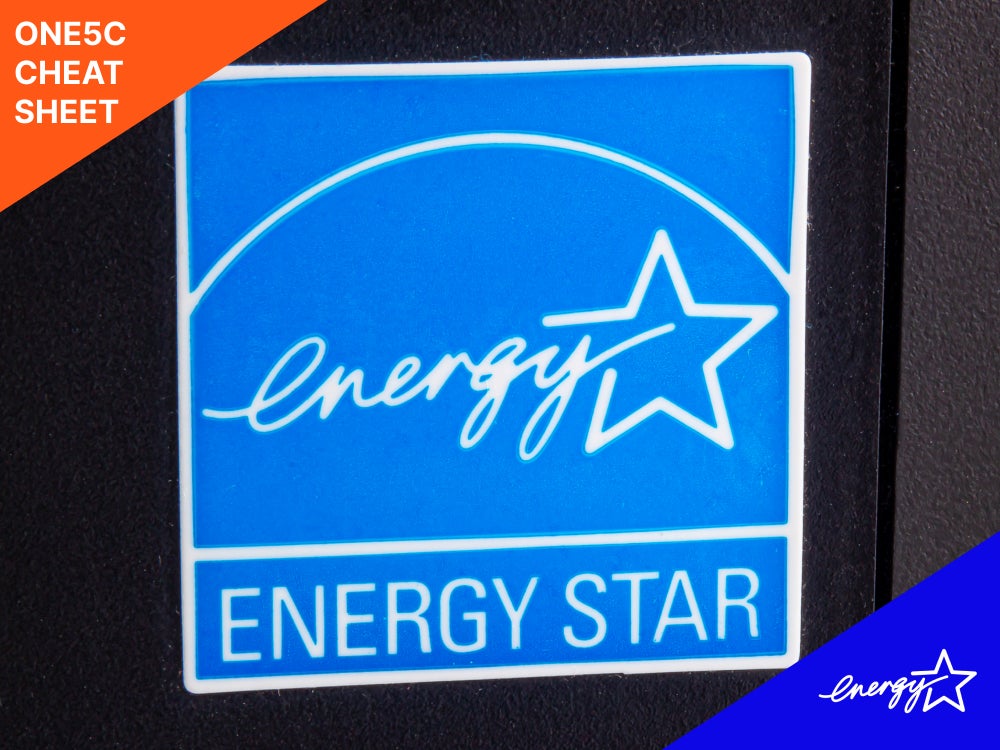Walk into any store that sells appliances and you’ll notice an Energy Star sticker on most of them. This little blue label is extremely helpful for making sure your appliances aren’t energy hogs. Energy Star is an energy efficiency program run by the U.S. Environmental Protection Agency and Department of Energy that certifies energy efficient products and provides guidance on saving energy in homes and commercial spaces. The program started in 1992 under the Clean Air Act to bring electric product manufacturers and the government together to fight air pollution. Nowadays, Thousands of organizations, including about 40% of Fortune 500 companies, partner with the EPA to be a part of this program.
What does an energy star label signify?
All kinds of appliances can be certified by Energy Star, including washers and dryers, light fixtures, refrigerators, and computers. Energy Star appliances are required to meet energy efficiency standards that are higher than the federally required benchmarks. These standards very among product categories. For example, an average Energy Star certified refrigerator consumes about 9% less energy than a refrigerator that meets the minimum energy efficiency requirements stipulated by the federal government.
To qualify for the Energy Star certification, a product must be tested and reviewed by a third party to meet strict performance requirements. Tens of thousands of products currently carry the Energy Star blue label. The EPA regularly reviews the specs for Energy Star products to provide “meaningful differentiation for highly energy-efficient products” as well as increase the share of energy efficient products in the marketplace.
One thing to remember: Energy Star doesn’t certify a product as being all green, because in the end, the product’s emissions are still dependent on the grid that it is connected to.
How does Energy Star help the environment?
Increasing use and availability of efficient appliances can help address climate change by reducing the overall energy-related emissions associated with our homes. Around 60% of energy generated in the United States still comes from fossil fuels, which means the energy, but simply by using less of this energy, anyone can contribute to fewer emissions.
According to Energy Star, the program and its partners have kept a range of pollutants from entering the atmosphere, including about 4 billion metric tons of greenhouse gasses, since the beginning of the program.1 The program and its partners have also saved families and businesses more than $500 billion in energy costs since its conception.
Can I get money back from tax credits or rebates?
There are several tax credits provided through the Inflation Reduction Act for energy efficiency in homes that consumers can take advantage of by investing in Energy Star products. This includes up to $2,000 when upgrading to a heat pump, up to $1,200 on home improvements for energy efficiency, and savings of about 30% on residential clean energy upgrades for products such as heat pump HVACs, heat pump water heaters and updates on windows and insulation.
Are there other labels worth looking at?
Energy Star is only one of the energy efficiency labels for household appliances out there, though it’s by far the most popular. There are several other recognized certifications that help consumers be more environmentally friendly, such as Green Guard and SMaRT, but Energy Star is the only most commonly used.
Many large appliances also come with an EnergyGuide label. This yellow placard, created by the Federal Trade Commission, is required on these heftier energy consuming appliances like fridges, air conditioners, and furnaces. It compares the energy consumption of the product to other products, and estimates the annual cost to run the appliance, among other factors.
- 2022 Overview of Achievements, ENERGY STAR, Apr. 2023 ↩︎

